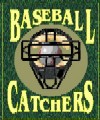 |
|
 |
|
|
If there is not a runner on base. A catcher must make sure he backs-up first base on all throws from the infield. He should not stand at home plate and watch. If he wants to watch the game, have him buy a ticket. Catchers must take the appropriate angle to back-up first base. He will need to sprint towards the warning track; getting as deep as he can so the ball will not get by him. Run to a spot that the ball will go to if missed by the first baseman. An angle from the third baseman will be further up the line than an angle from the second baseman. Work hard, and don't be the reason that a runner advances on a throwing error. With a potential double play, there are two different points of view. Some coaches instruct their catchers to remain at home in case the runner at second is safe, and tries to score on an errant throw. Other coaches do not subscribe to this philosophy. They instruct their catchers to continue to back-up the first baseman. The rationale is that it is very difficult for a runner to score from first on a ball hit to the infield and then followed by a throwing error to second. If a coach is worried about the runner, he can assign the third baseman or the pitcher to cover home if need be. A catcher can easily get back in time to cover home plate should a runner advance past second base. When a ball is hit into the outfield, and there is not a runner on base, the catcher should trail the runner to first base. If the runner takes too wide a turn, the outfielder, or relay man, may throw back to first base. The coach can either instruct the first baseman to follow the runner off the base (allowing the catcher to cover first on a throw behind), or the catcher can back-up the first baseman on a throw back to first. Either way, the catcher should get down the line. Hustle will always be rewarded. |
